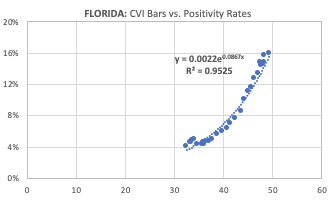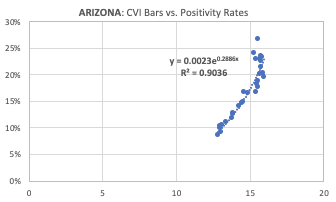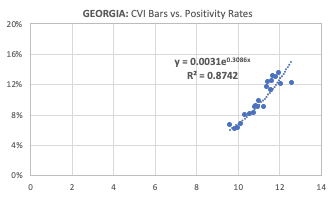Hopes of the United States following a linear path to recovery from the coronavirus have been quashed in recent weeks. When the country began to reopen after Memorial Day weekend, COVID-19 cases started to rise. Over the Fourth of July weekend, a CNN article referencing Cuebiq data showed that even more people traveled to 10 cities identified as coronavirus hot spots. States in areas across the U.S. are seeing cases rise to new heights, with Florida shattering the record for new single-day COVID-19 cases last week.
As states around the country grapple with coronavirus outbreaks that came after reopening, you may be asking the question: “Does reopening bars correlate with coronavirus spikes?”
The COVID Tracking Project and Cuebiq’s Visit Index
At Cuebiq, we also wanted to answer this question, so we dug into the data. In order to understand which types of venues — like bars — are truly “high-risk,” we analyzed whether there was a correlation between foot traffic to certain venues and “test positivity rates,” the percentage of positive tests by state.
In this analysis, we looked at the positive test data from The COVID Tracking Project and Cuebiq’s Visit Index to bars, full-service restaurants, and department stores, focusing on three states: Florida, Arizona, and Georgia. We selected these states based on clean test positivity data and their identification as potential hot spots for an increase in cases in the month of June, 2020.
We focused our analysis on positive test data for June 1 — June 30 and compared it to Cuebiq’s Visit Index to bars for eight days earlier, May 23 — June 22. In the case of Georgia, where bars started to reopen on June 1, we limited the analysis for test positivity rates starting on June 9.
Positivity Rates and Correlation With Foot Traffic to Bars
Our findings were revelatory: There were strong correlations for all three hotbed states between positivity rates and foot traffic to bars.
Meanwhile, states such as New York and New Jersey, which delayed reopening of bars, have seen far lower levels of coronavirus spikes. We found that visitation to full-service restaurants and department stores did not show a correlation with positivity rates.
The correlation with bars and test positivity rates is not entirely surprising. A recent Time article featuring Cuebiq data cites Gerardo Chowell-Puente, an epidemiology and biostatistics professor at Georgia State University, in saying that “bars likely pose a greater transmission risk than other indoor venues, like retail stores or movie theaters, because their patrons tend to have more close interactions with one another.” Not to mention, when people are inebriated they are much more likely to disregard social distancing protocols.
As more states begin to evaluate — and reevaluate — their criteria for reopening, it will be interesting to see how they include bars in those plans, in light of these new findings.
Learn more about Cuebiq’s Mobility Insights and how they can help brands understand the impact of COVID-19 in our blog.






